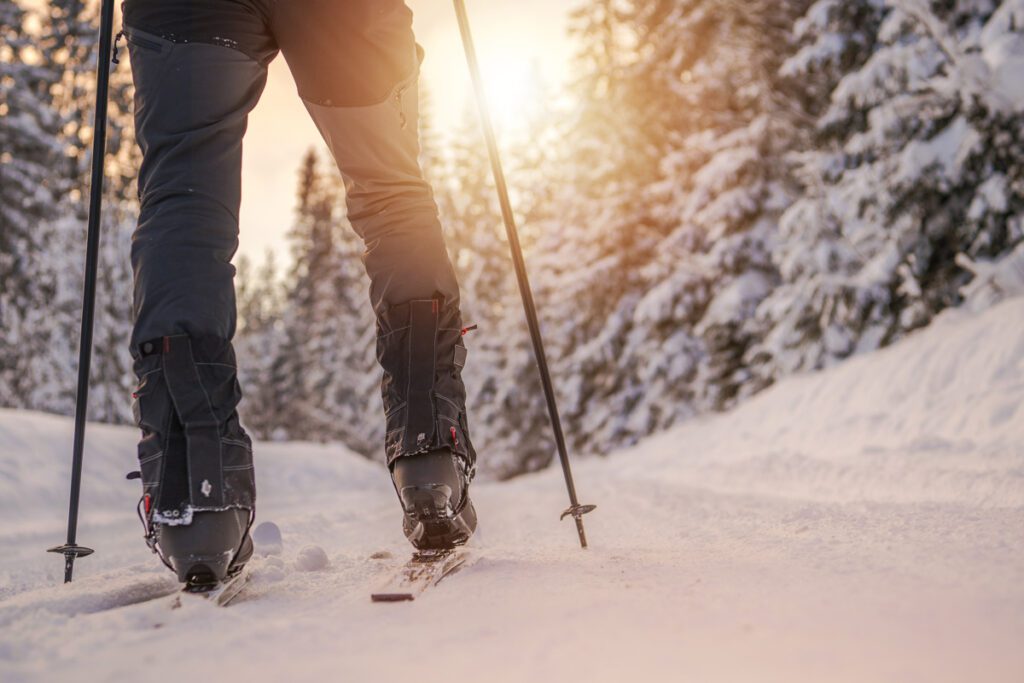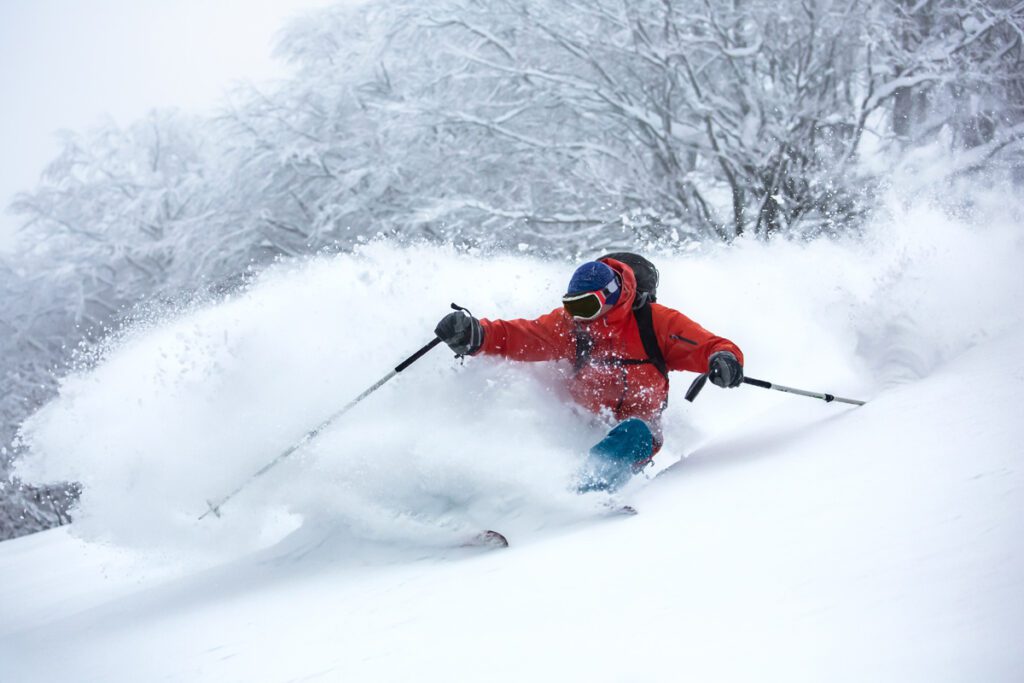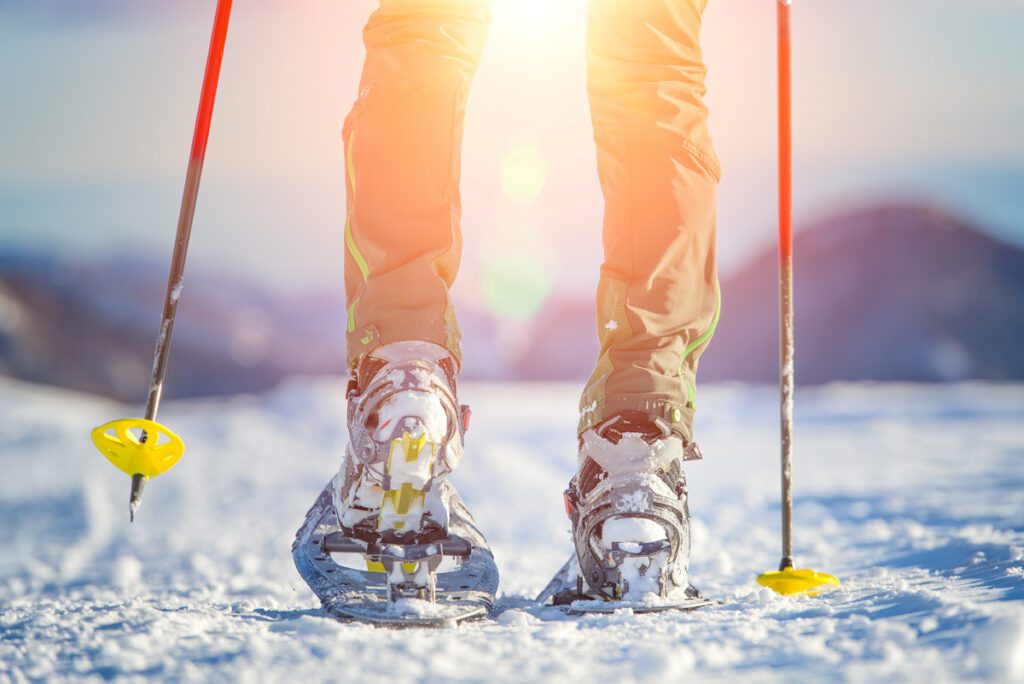Ski Poles: Everything You Need to Know
How do you find the right ski poles? It seems so simple, yet there’s a lot to it. Anyone who has ever skied will tell you that downhill ski poles are vital for control, balance and navigation on the mountain. The best ski poles are lightweight and will enhance your experience on the mountain. An uncomfortable set of poles can be a detriment to your adventure if they are heavy and difficult to hold. So, how do you find the perfect set of downhill ski poles? Below, we have everything you need to know about downhill ski poles. We have info on types of ski poles, ski pole sizing and other factors you should consider when updating your sticks.

How to Find the Perfect Ski Pole
The purpose of ski poles is primarily to help you keep your balance while you ski. Having comfortable ski poles can have a strong effect on your skiing experience. Factors to consider when tracking down an ideal pair of poles include sizing preference, type of ski pole, construction material and personal preference.
If your poles are too long, you might have difficulty holding them or controlling them because they are too heavy or demand a lot of effort to use. If your poles are too short, you may have issues staying on your skis a high speed because poles help keep you balanced with little touches on the snow as you speed down the hill.
Types of Ski Poles
There are various types of poles for all the unpredictable terrain on the mountain. The type of poles you purchase will largely depend on where you like to ski. Let’s look at the different kinds of ski poles on the market.
- Alpine poles – These are the most common poles out there. Alpine ski poles are best suited for downhill skiing across many types of terrain. These poles come with a comfortable handle that is easy to grip, a straight shaft and a standard snow basket for on- and off-piste skiing. Some more recent models include additional features like more baskets.
- Freestyle poles – Commonly called park poles, freestyle poles are made for conquering the terrain park. These poles have large snow baskets that create a floating effect instead of sinking into the deep snow. Freestyle poles have thinner shafts and help the skier propel on the park’s flat-pack surface. They are typically shorter in length to help avoid all the obstacles a skier encounters at a terrain park.
- Nordic poles – Also called cross-country poles, Nordic poles are used for skiing flatter surfaces like hiking, skating, snowshoeing and trekking. Nordic poles are lightweight and have thin shafts and spiked tips to help the skier grip the snow to propel forward.
- Powder ski poles – Just like the name implies, these poles are made to handle the fluffy white stuff. Also called backcountry poles, powder poles have thicker shafts to help cushion the impact of skiing in the deeps. Most powder poles come in adjustable lengths so you can modify them depending on the conditions.
- Ski Racing poles – Race poles are made for going fast. Designed thin and lightweight, race poles have less drag and allow racers the freedom to move at a high rate of speed. Most race poles have high-tech features and are constructed with rare materials designed to boost performance.

Construction Aspects
Ski poles can be constructed from a variety of materials, depending on how and where you ski. Here are a few of the most common types of poles based on their construction elements.
- Aluminum poles – Most poles are made from aluminum because it’s strong and lightweight. These are the most popular kind of poles on the market because they are inexpensive, reliable and durable.
- Carbon poles – Carbon poles are strong and flexible poles constructed of mostly carbon fiber. These poles are hard to bend or break, but they are expensive compared to the others.
- Composite poles – Composite poles are constructed from a variety of materials like aluminum, carbon and graphite. These poles have a better shock-absorption ability when compared to traditional aluminum poles. Because of their lightweight design, composite poles are more likely to break under strenuous use.
- Fiberglass poles – Fiberglass poles are seen mostly among downhill racers who want a ski pole that is very thin yet super strong. These poles are high performing and usually more expensive than aluminum poles.
Sizing Ski Poles
When it comes to sizing poles, the traditional method is to hold it upside down right under the basket with your thumb pointed up along the basket. When holding them this way, the handles of the ski poles should touch the ground when you hold your arms at a 90-degree angle. While this is an informal way to measure, it’s fairly accurate. To find the ideal fit, compare the traditional method of sizing against how you measure up to the chart below.
Ski Pole Sizing Chart
Here’s a more official chart that’s commonly used to size ski pole. It determines your ski pole size based on your height. It’s easy to rent ski poles to dial in the perfect length for you too!
- 3’5’’ to 3’8’’ tall – pole length 34 inches
- 3’9’’ to 4’ tall – pole length 36 inches
- 4’1″ to 4’4″ tall – pole length 38 inches
- 4’5″ to 4’8″ tall – pole length 40 inches
- 4’9″ to 5’0″ tall – pole length 42 inches
- 5’1″ to 5’3″ tall – pole length 44 inches
- 5’4″ to 5’6″ tall – pole length 46 inches
- 5’7″ to 5’9″ tall – pole length 48 inches
- 5’10” to 6’0″ tall – pole length 49 inches
- 6’1″ to 6’3″ tall – pole length 52 inches
- 6’4″ to 6’6″ tall – pole length 54 inches

Personal Preference Counts
While this is a good guide, you don’t have to follow it completely. When choosing the perfect ski pole for you, personal preference pays a big factor. Some skiers like longer poles and other prefer shorter poles. Skiers who like to ski groomers or like riding fast on hard pack should consider longer poles. Longer poles have a wider range of maneuverability and allow you to cruise across flat surfaces easier. Skiers who like to stick their poles in the snow and use them as a turning guide will also like the added length. Shorter poles can create balance issues if you try to turn that way.
If you plan to hit the backcountry or crushing some powder, using a shorter pole is preferred. Shorter poles give you better balance when you descend the mountain at a high speed. Poles that are shorter are better for small touches to keep your balance when you’re going fast. (But don’t go too short or you’ll start to lose your balance.)
Other Important Factors
When it comes down to it, you’ll want to find a pair of poles that fit perfectly for you. Here are a few more tips for finding the perfect pair.
- Grips: Be sure to check the grips to make sure they are comfortable to hold.
- Pole straps: You’ll also want to check the pole straps to make sure they fit around your wrists and are not cumbersome.
- Snow Baskets: Next, you’ll want to inspect the snow baskets on the poles. Snow baskets come in two types: hard and soft. Soft now baskets are larger and made for powder runs while hard snow baskets are smaller and designed for hard surfaces.
- Pole tips: Check the tips of the poles as they typically come in two styles: plastic and metallic.
Ski Poles Wrap-Up
As you can see, there are a lot of options out there when it comes to poles. Sure, it’s easy to grab a shoddy old pair of poles if you need to – but selecting a proper set can really step up your game on the mountain. Ski boots, bindings and skis get all the recognition, but ski poles are important, too! Talking to pros at shops like Christy Sports will give you further insights too!
What’s your personal preference? Have you seen success on the hill by using better poles? What brands do you recommend? We’d love to hear from you and keep the conversation going in the comments section.